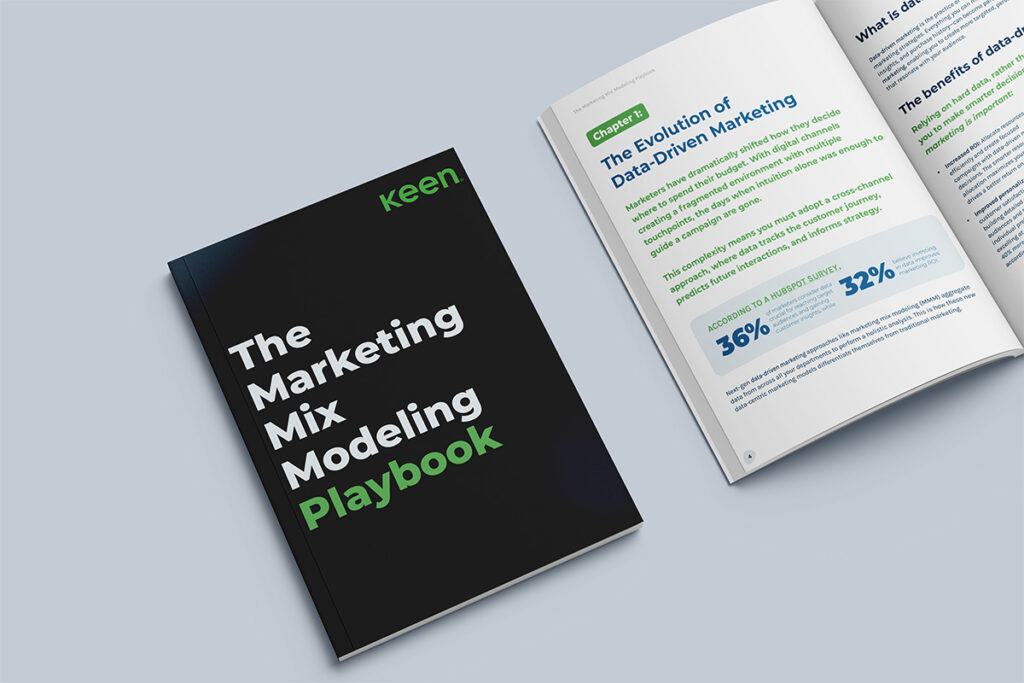Why traditional marketing mix is falling behind
Traditional Marketing Mix Modeling (MMM) has been a cornerstone for marketers for over three decades, guiding large brands through channel decisions and spend optimizations. However, as the digital age accelerates, the limitations of traditional MMM become increasingly apparent. Driven by a reliance on historical data and general inflexibility, these legacy systems are struggling to keep pace with the demands of modern marketing environments.
Long project times
One drawback of traditional MMM is its lengthy project timelines. Traditionally, MMM analysis is conducted annually due to its heavy reliance on past data and complex processing requirements.
This means that by the time the insights are derived, they are too late to effectively influence current marketing decisions.
Moreover, the rapidly changing market conditions and consumer behaviors can render these once-a-year insights nearly obsolete, limiting their utility in agile, real-time decision-making which is crucial in today’s fast-paced market.
Consultant hours, high costs
Another hindrance associated with traditional MMM is the cost implication of both time and money. The process usually demands high consultant involvement, who not only design and run the models but also interpret the complex outputs. This dependency on specialized skills not only adds to the direct costs—in terms of high consulting fees—but also adds indirect costs related to the time taken to complete the analyses. These substantial investments often make it challenging for businesses, especially smaller ones, to frequently engage in MMM, subsequently affecting their ability to make informed, data-driven decisions swiftly and efficiently.
Complexities of an Evolving Marketplace
The marketing world today is a landscape of evolving challenges and opportunities. As the demand for personalized and impactful marketing strategies increases, businesses are grappling with how to navigate and optimize their marketing efforts in an increasingly complex environment.
Too Many Retail Media Networks
The rise of Retail Media Networks (RMNs) has transformed the advertising landscape, giving retailers lucrative opportunities to monetize their platforms. However, this boom has led to a crowded and fragmented ecosystem. Brands now face the challenge of choosing the right networks that align with their marketing objectives and target audiences. The proliferation of RMNs necessitates juggling investments across multiple platforms, which can dilute brand messaging and complicate measurement of advertising effectiveness. Decision-makers are constantly assessing whether the prioritization of one network, such as Amazon, overshadows potential opportunities in others like Walmart or Instacart, potentially leading to imbalanced exposure and missed engagement opportunities with different market segments.
Revenue Attribution to Marketing
One of the most pressing challenges in the current marketing environment is accurately attributing revenue to specific marketing efforts. With multiple channels and customer touchpoints, pinpointing the exact contribution of each component to overall sales becomes intricate. Traditional models of revenue attribution often struggle to account for the dynamic interactions between various media channels and the subsequent influence on consumer behavior. This limitation makes it difficult for marketers to justify investments and make informed decisions. Furthermore, in the realm of RMNs, brands are compelled to navigate not just direct returns but also to understand and quantify indirect benefits such as brand building and customer loyalty, which traditional ROI metrics may not fully capture.
Halo Effects in Marketing
The concept of halo effects in marketing describes the indirect benefits one marketing activity can have on another. For instance, a well-executed advertising campaign on one RMN can enhance a brand’s visibility and favorability, thereby boosting performance across other channels and platforms. However, measuring these halo effects poses significant challenges. Brands often struggle to quantify how an advertisement in one domain enhances brand perception or drives sales in another, non-measured area. This is compounded by the digital shelf complexities, where factors such as search rankings and customer reviews interplay subtly yet powerfully to affect product visibility and purchasing decisions. Understanding and leveraging halo effects can significantly enhance strategic planning and resource allocation but require sophisticated, data-driven tools and approaches that can dissect and interpret these nuanced dynamics effectively.
The evolving marketplace in the digital age demands that marketers not only adapt to complexities but also harness them as opportunities. By understanding and navigating the challenges associated with too many RMNs, sophisticated revenue attribution, and elusive halo effects, brands can optimize their marketing strategies to achieve better alignment with their business goals and deliver measurable success.
Bring your MMM In-house
YOUR Data, YOUR Models, YOUR Plans
Taking control of your MMM means utilizing your own data, crafting custom models, and shaping marketing plans that align with your unique business goals. Moving MMM in-house allows for greater flexibility and immediate adaptation to market changes, ensuring that decisions are based on the most current and relevant information. This approach not only enhances the precision of your marketing efforts but also empowers you to lead proactive rather than reactive strategies, tailored specifically to your audience and business objectives.
Establish credibility across business units
Owning your MMM process fosters credibility across various departments by demonstrating the direct impact of marketing on overall business outcomes. When each unit understands and sees the evidence of how marketing strategies contribute to revenue and other key performance indicators (KPIs), it creates a unified approach to business growth. Establishing this credibility is essential for securing buy-in from stakeholders across your organization, from finance to sales, ensuring that marketing is viewed not just as a cost center but as a vital investment in your company’s future.
Switch to the Keen Platform
Adopting the Keen Platform can revolutionize how you apply MMM to drive business success. The platform’s use of advanced machine learning techniques allows for a more dynamic and nuanced analysis of marketing data. This means your marketing decisions can be more agile and data-driven, offering a clearer understanding of how different strategies contribute to both short-term results and long-term growth. With the Keen Platform, simulate various marketing scenarios to predict outcomes and adapt strategies swiftly, ensuring maximum return on investment and minimizing the risk of costly mistakes.
The Keen Platform‘s real-time data processing also ensures that you are always equipped with the latest insights, making it easier to react to market changes and adjust your strategies accordingly. This can lead to improved marketing efficiency, reduced waste in ad spend, and ultimately, a stronger impact on your company’s bottom line.





